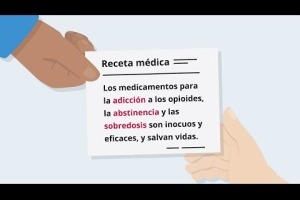Image

Getty Images, sturti
Highlights
- Opioid use disorder is a chronic, treatable condition. There are effective, FDA-approved medications that can help people stop or reduce opioid use, including methadone, buprenorphine, and naltrexone. The medication lofexidine helps ease opioid withdrawal symptoms.
- Medications for opioid use disorder reduce the risk of overdose deaths and of behaviors that increase the risk of infectious disease, including HIV and hepatitis C virus. However, fewer than 1 in 5 people with opioid use disorder are treated with these medications.
- Medications for opioid use disorder are also safe and effective during pregnancy and breastfeeding.
Latest from NIDA
Advancing Recovery Research
|
Increasing the number of people achieving long-term recovery from SUDs is a national policy priority and a major goal of the research supported by NIDA.
AI screening for opioid use disorder associated with fewer hospital readmissions
|
NIH-supported clinical trial shows AI tool as effective as healthcare providers in generating referrals to addiction specialists
Reflecting on NIDA’s 50th year and looking to 2025
|
Efforts must continue to prevent drug use, addiction and overdose, increase treatment, and leverage new technologies
Read more about medications for opioid use disorders
- Information on how to get treatment for opioid use disorder from the Substance Abuse and Mental Health Services Administration (SAMHSA).
- How to participate in a NIDA-funded clinical trial on medications for opioid use disorder.
- More information from SAMHSA on medications and other treatment options for substance use disorders.
- Resources for health professionals on opioid use disorder treatment.





